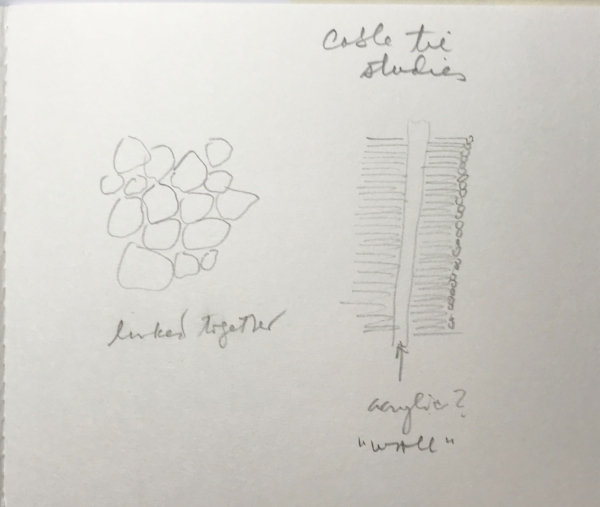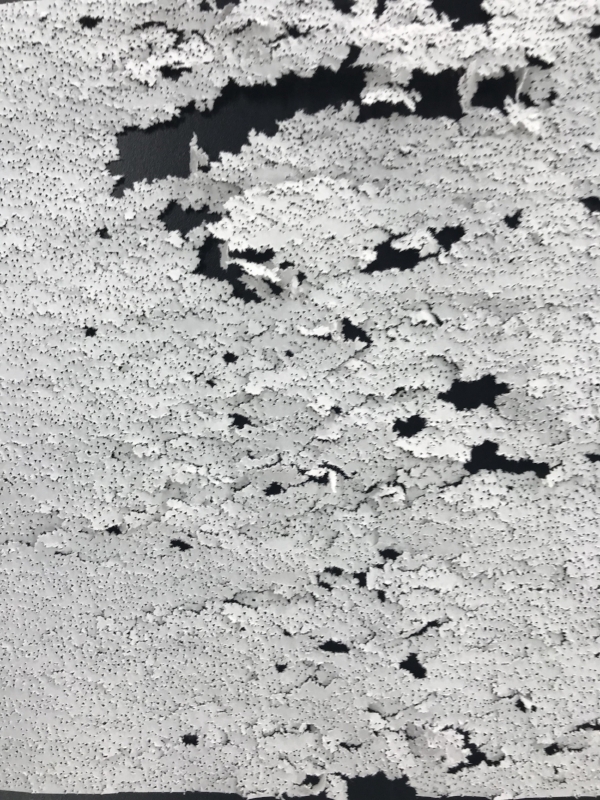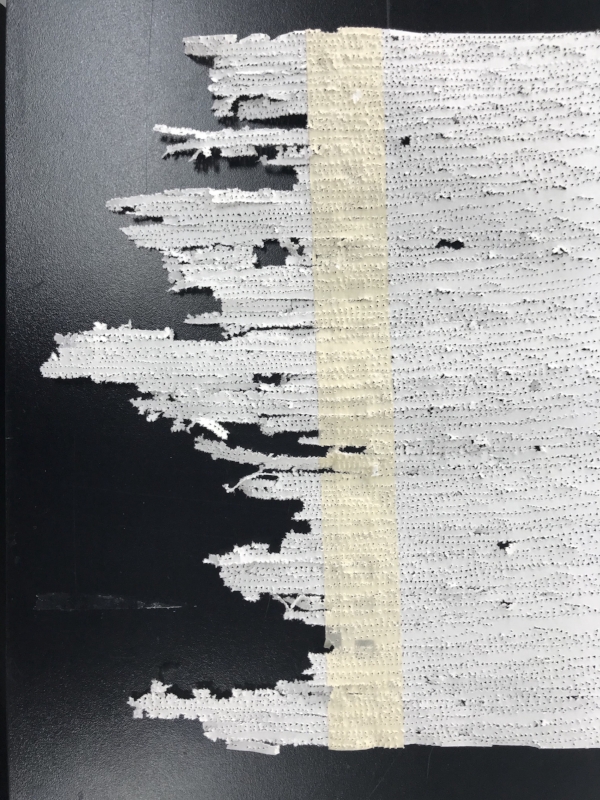Talking with Andrea affirmed that I'm on the right track and to keep going. To stay open, be curious and not be so quick to discard an idea. When I brushed off the enlarged mind map that I had installed on the studio wall (for lack of anything else at this point), she caught it and said she could see the patterns and colors ending up in my work. I don't take that literally, but do see her point.
A significant insight occurred while talking with her - a moment of reflection-in-action (Gray, 2004). I was describing how starting this degree feels like relocating to a new country, which I've done twice in the past six years. All of the themes I'm working with are relevant: feelings of dislocation to a new, unfamiliar studio; a sense of the ground shifting beneath me; loss of what I've comfortably known; a yearning to feel "at home"; wanting to belong; looking for a "way in" but not knowing how to start; and a sense that this is all moving quickly - the impermanence of any given state. This finite period of "relocating" my art practice is a special time when senses are heightened and the eye notices everything because it's new and unfamiliar.
In that moment, I realized that I can use this experience in my research. It's not clear to me yet what that specifically means, but I am aware that I want to pay attention, capture, and use how I navigate these early weeks and months. My installation art practice will recreate these conditions with every new site (in the studio, for an exhibition, during a residency), as discussed in my last blog post on impermanence. It suddenly seems paramount that I understand and somehow codify this stage of the game.
If I can create a map for the journey now, maybe I don't need to completely reinvent the wheel each time I approach a new installation. Or at least I'll get less lost (Godin, 2017). After all, I've gained knowledge, skill, and created a repeatable process on how to do an overseas move—not only the checklists and tasks, but also how to say goodbye, let go, look around, find my tribe, and land well.
An inkling of what this process might entail includes:
:: Notice what's happening and my response
:: Record the experience through this blog, sketches, mind maps, word lists, video and voice recordings (post them here, use them in my work?)
:: over time, notice the patterns—what is emerging? what is repeatable? what might be helpful next time around?
References:
Gray, C. and Malins, J. (2004). Visualizing research: a guide to the research process in art and design. Aldershot: Ashgate.
Godin, S. (2017) 'The thing about maps', Seth's Blog, 30 October. Available at: http://sethgodin.typepad.com/seths_blog/2017/10/the-thing-about-maps.html (Accessed: 30 October 2017).






















